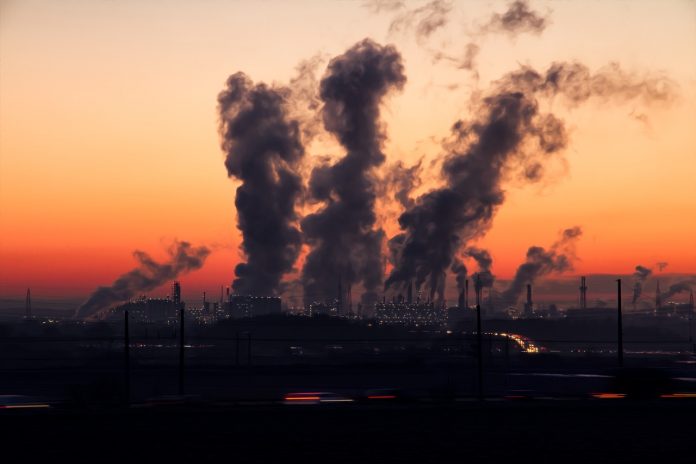Ammonia is presenting a big new problem in Asia at the moment, specifically China and India.
China has plans to cut ammonia emissions that will reduce the pollution which threatens to worsen the acid rain problem. A team of researchers used models to predict what may happen after the cuts.
Over the past decade there was a growing industrialization in China which increased air pollution and acid rain which are, as is known, both very harmful for human health and the general environment health. The government is funding several projects to contain and reduce agricultural ammonia pollution.
To better understand what the results of these changes will be, the researchers have used a model based on nationwide air measurements and an ammonia pollution model and they worked on what might happen with reduced amount of ammonia in industrial and agricultural products. What they found is that the haze pollution can be reduced anywhere from 11% to 17% and ammonia reduction by 50% if they improve agricultural management. But the reduction can increase the pH of rain and make it more acidic by one unit.
Then the team concluded that they can reduce ammonia emissions significantly but the economic benefit of the process would be offset by more acidic rain. The researchers suggest that the government should focus on certain areas only instead of going for nationwide. They can examine the pollutants and control them while prioritizing the needs of each area in the country.
The satellite data available shows a thick cover of toxic ammonia in the agricultural areas and India might be the most affected. It’s emitted from the ammonia based fertilisers and animal waste that has not been managed properly. India has the second largest farming area in the world and they use a lot of ammonia fertilizer per hectare.
There is a presence of ammonia in the form of gas and it can be dangerous for human health. It can damage lungs and respiratory tract. It’s toxic when it contaminates the water, harmful algal blooms and so on.
This study on India used the data from NASA atmospheric infrared sounder satellite to track and find increasing ammonia levels. The ammonia levels have been increasing significantly between 2002 and 2016 over agricultural centers of the United States, Europe, China and India.
They were able to observe the ammonia in the atmosphere and record the data over global agricultural areas. Increased ammonia emissions can be seen with acids pollution and aerosols which are very bad for human health.
“On the flipside, emissions are not regulated in most of the world and there are a lot of wastes in the fertilizers, agricultural products and so on. These contribute to more ammonia emissions,” says Lucy Timber, journalist at Let’s Go And Learn.
Previous studies have shown that 70% of ammonia used ends up wasted. Official policies pertaining to ammonia are still pending. Researchers have been working on the issue of efficient spending because it can be managed, as it’s done in Europe. Unfortunately, ammonia is left out even in the US.
The study also found that the elements responsible for ammonia were different based on the place of pollution. For instance, in India and China, the majority of ammonia pollution is due to fertilizers and poor animal waste management. There are other areas that are even more affected. Ammonia reacts with sulphur dioxide and nitrogen oxide which are created in fossil fuel combustion and it ends up forming a haze which is harmful to human health. In the US and Europe, for instance, fertilizers are not to blame but the measures against acid rain which led to accumulation of ammonia.
“The head of Indian Nitrogen Group said that no relevant policies are in place at the moment but they are working on things to make it better,” says Jonah Hopkins, environmental writer at MyWritingWay.
Nitrogen can be the next carbon – carbon led the industrial revolution and nitrogen will give agricultural revolution. Unhealthy and unregulated use of both can be as bad as the poor use of carbon.
Chloe Bennet is a journalist at UK Writings and Research Papers websites. She writes about economics and pollution. Also, Chloe teaches grammar at Best Writing Services portal.












